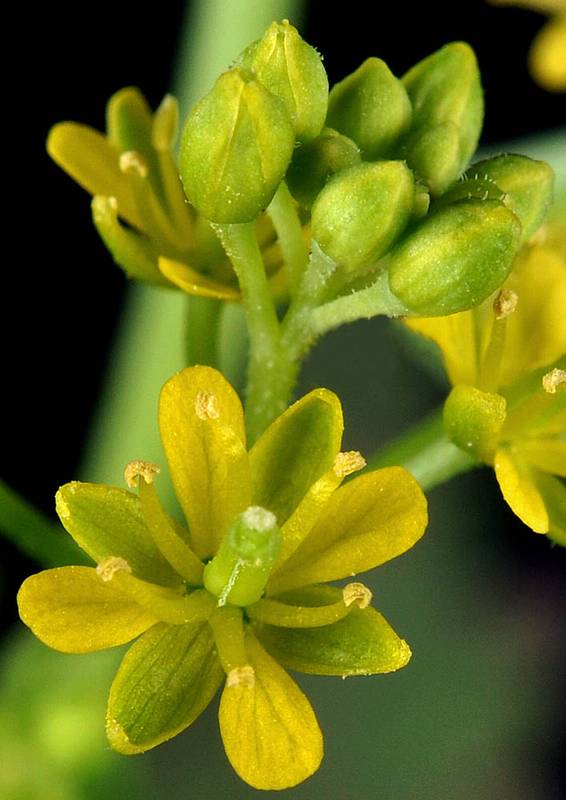Rorippa tenerrima
Rorippa curvisiliqua
Modoc yellowcress
western yellowcress
Leaves variable, 2-7 cm. long, mostly oblong-oblanceolate, entire, toothed, pinnately parted or pinnatifid, the segments linear to ovate, entire or toothed.
Inflorescence of bractless racemes; pedicles spreading, 2-4 mm. long;
sepals 4, 1-2 mm. long;
petals 4, yellow, 1-2 mm. long;
stamens 6;
style 0.3-1 mm. long.
Siliques 6-15 mm. long and 1-1.5 mm. broad, nearly terete, usually curved;
seeds in 2 series.
Rorippa tenerrima
Rorippa curvisiliqua
Occurring east of the Cascades crest in Washington; British Columbia to California, east to the central U.S.
Occurring on both sides of the Cascades crest in Washington; British Columbia to California, east to Montana and Colorado.
- Local floras:
BC,
CA,
OR,
WA
- Local Web sites:
CalFlora,
CalPhotos,
Flora NW,
PNW Herbaria
WildflowerSearch
iNaturalist (observations)
USDA Plants Database
- LBJ Wildflower Center
- SEINet
- Plants of the World Online
- Encyclopedia of Life
- Wikipedia
- Google Image Search
- Local floras:
BC,
CA,
OR,
WA
- Local Web sites:
CalFlora,
CalPhotos,
Flora NW,
PNW Herbaria,
Turner Photog.
WildflowerSearch
iNaturalist (observations)
USDA Plants Database
- LBJ Wildflower Center
- SEINet
- Plants of the World Online
- Encyclopedia of Life
- Wikipedia
- Google Image Search


